Why Video Marketing is Your Secret Weapon in 2025
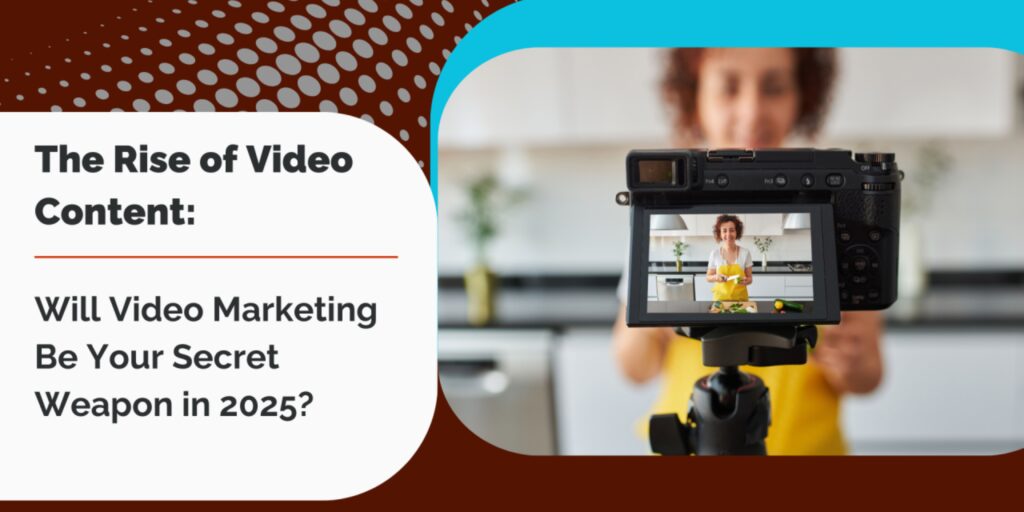
In 2025, video marketing is no longer an opportunity but a powerful strategy to make a serious difference in your company. With the popularity of visual information consumption consumers now seem to flock to video when seeking information entertainment or deciding what to purchase. As attention spans decrease and competition heats up, video offers that rare window to grab attention, engage audiences, and generate conversion as never before. No matter what, from the tiniest of businesses to big global brands, video marketing will be that secret ingredient for you to shine within the cluttered digital space, creating real human connection and multiplying your marketing efforts.
The Growth of Video Content Consumption
In the span of a mere decade, video content has enjoyed the most dynamic increase in consumption, and the trends do not seem to be slowing down even as late as 2025. The transition towards the acceptance of video as the more preferred format for content consumption is not a fad; it has become the culture among people in using digital media. It has a huge presence in social media feeds, online shopping sites educational tools but overall the audience just prefers this particular form.
1. Statistics and Trends Driving Growth
Video consumption statistics are astounding. By 2025 it is expected that over 80% of all global Internet traffic will be video-based. This growth is supported by the increasing popularity of platforms such as YouTube, TikTok, Instagram Reels and Facebook where video content dominates user engagement. It has been reported that over 500 million hours of video are being consumed on YouTube every single day while similar numbers play out across other platforms. These figures show not just the quantum of consumption but also indicate an ever increasing preference for video as a medium for both entertainment and learning.
2. Mobile Video Consumption
The mobile has been one foremost channel for video expansion. Smartphones make video content available like never before users can watch videos anywhere and anytime. Mobile video consumption is increasing by leaps and bounds; people are watching videos during commutes, breaks or in between tasks. Because of this shift, vertical video formats like TikTok and Instagram stories have become incredibly popular. Short form video works exceptionally well for mobile viewers who often prefer their content to be quick and easy to digest rather than drawn-out and long.
3. The Rise of Streaming Platforms and On-Demand Video
Streaming platforms like Netflix, Amazon Prime Video, and Disney + have completely revolutionized the fun ways in which people enjoy their time. The general inclination of individuals everywhere to ogle content on-demand has prevailed on how they also consume industrial applications in marketing. Having grown used to viewing contents the way they want without outside influences, consumers now expect to have that same behavior with regards to brand communications. The more easily people expect instant access to content, the more businesses see the value in on-demand video, allowing audiences to participate when and where they want to consume information.
The Impact of Video Marketing on SEO and Search Rankings
By 2025, video marketing isn’t just the icing on the cake; it really is a part of your SEO strategy now. It is how search engines such as Google grow, by making video content capitalize more on promoting a good user experience. Businesses should know the importance of video to their SEO strategies for increasing online visibility and organic traffic.
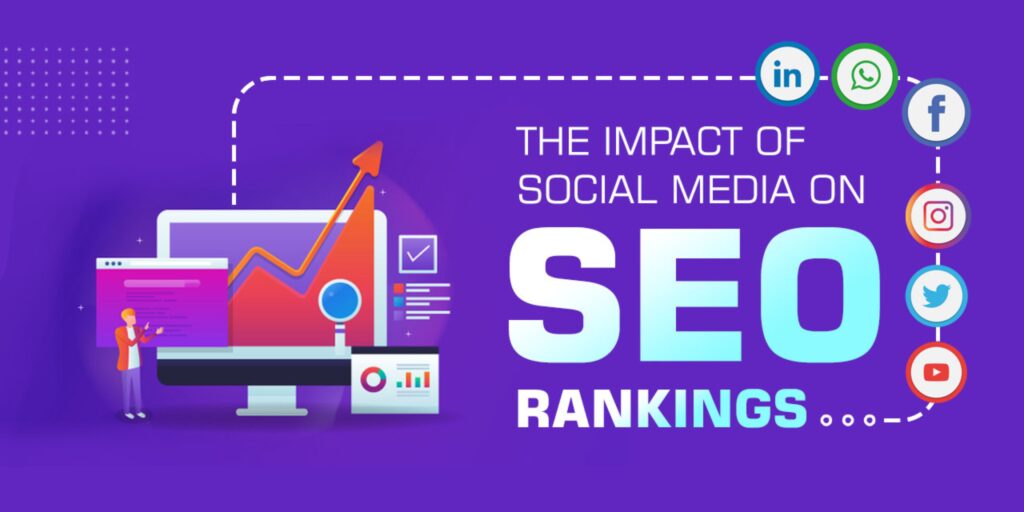
1. Video as a Ranking Factor
Google’s algorithm for quite some time now has been biased toward rich, engaging content; and video is no exception. Over the years, Google has focused on video results in search queries. For example, in some instances, when anyone types a product or service name, there will also be a video thumbnail alongside the organic search results. This implies how the search engine is evolving to showcase video content in a much clearer eye. Research has indicated that video results are likely to occupy higher space in the search engine results page (SERP) compared to standard text.
2. Increasing Dwell Time and Engagement
One of the important elements affecting SEO rankings is “dwell time,” or the length of time a user stays on a webpage. When users land on a website page with video content, they are likely to spend some time there. Video is attention-grabbing and can keep people engaged beyond the content of text alone, and Google is aware of this: longer the dwell time, higher the perceived quality of the content. Thus, embedding video material into a website or blog increases user engagement and will help lower the bounce rate, leading to better SEO.
3. Videos in Search Results Drive Click-Through Rates (CTR)
Video thumbnails appearing in search results naturally attract more eyeballs than text snippets. This enhanced visibility further increases the chances of being clicked; click-through rate is a vital aspect in SEO. CTR informs Google or other search engines about the relevance and quality of your content. If your video display in the search results manages to attract a considerable number of clicks, search engines will view that as confirming the relevance of your content to the user’s query, thus increasing its ranking over time.
Video for Brand Awareness and Storytelling
By 2025, video is an established marketing medium, with a strong grip on image-building and storytelling. Today’s consumers want a real experience touched by emotion-an experience video can engage in more deeply than any other medium. Video content holds the power to humanize brands from startups to big corporations, triggering emotions and making connection points with audiences that last forever.
1. The Power of Storytelling Through Video
The storytelling form has always been an essential element in human bonding. Video is the best way to bring to life a brand story. Combining visuals, sound, and narrative, video helps businesses create compelling stories that attract viewers and forge deep emotional relations with them. We are hardwired to respond to stories, but, more importantly, these stories resonate with people’s values, emotions, and aspirations. Whether it is about the story of your brand, the hurdles that you have gone through, or the blessings that you have brought into your customers, sharing the stories through video adds to trust, encourages brand loyalty, and helps to build a community around your business.
2. Building Brand Awareness with Video Content
Brand Awareness means setting in place convince some potential customers know who you are, what you stand for, and why they should care. Video is perhaps the most effective medium for boosting your brand awareness because your message verifies it in an easy, most highly engaging format. Video content can be used such that it makes your business more visible against others when used in strategy.
Since videos can be shared on all social media platforms, your brand will have a broader reach without costing you a penny. Consider Facebook, Instagram, LinkedIn, or TikTok. They all increased importance to video within their algorithms, making it more possible for brands to spread and reach potential customers who would not otherwise get to know you. The more people share and engage with your video, the more exposure your brand gains.
Thus, a business that ’employs’ video content has a higher chance of being lifted at the top of relevant queries.
3. Types of Videos that Enhance Brand Awareness
Knowing what types to shoot is the secret to reaching your audience effectively; there are many kinds of videos that can create great brand awareness.
•Explainer Videos: These short informative videos help break the complex concepts that describe either your products or services offer, which makes the subject digestible for a layperson.This is the most effective format suitable for startups or new products that like to educate prospective users regarding what they have to offer.
•Behind-The-Scenes Videos: Audiences want to see the human side of their brand. Behind-the-scenes videos show anything away from public view: product creation, a sneak peek into your office culture or how the team collaborates. This humanizes the brand and fosters relatability for consumers thus creating a deeper emotional connection.
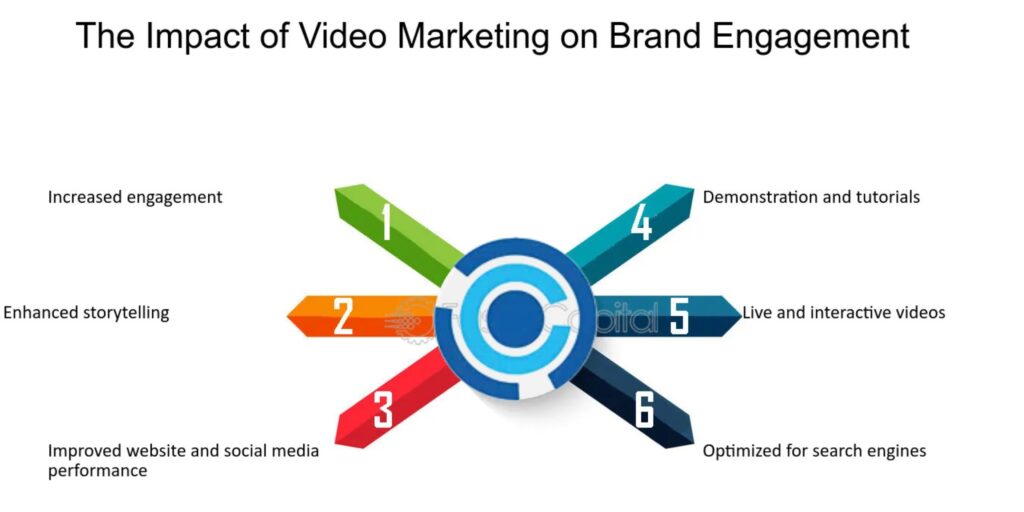
Video Marketing’s Role in Social Media Strategy
In 2025, the major part of all social media strategies adopted by companies worldwide revolves around video marketing. With the concomitant rise of social networking sites emphasizing video content, marketers have realized video is no more an additive, but a requisite in the successful definition of digital age marketing. From Instagram Stories to TikTok challenges and YouTube vlogs, video has been highly engaging for the audience resulting in identity formation and conversions. What makes this efficient for social media marketing, anyway? And how can it be used in creating effective strategies for such platforms in businesses? Learn every little tactic and strategy about video marketing that can rev up for business endeavors through 2025 years of a longer time to come.
1. The Shift Towards Video Content on Social Media
In recent years, social media platforms have infused video imagery into their algorithms. From Facebook to Instagram and Twitter to LinkedIn, videos are no longer an option but usually the first choice of content for users and platforms alike. Such change occurs primarily because people want attractive, easily consumable content studded with the ability to grab attention and foster interaction.
Statistics back the claim of social media users watching video content more than ever before. Platforms like TikTok have completely overshadowed the short-form video culture, which has become recognized. In long-form video, though, YouTube remains tops. Since videos produce more engagement—likes, shares, and comments—social media algorithms favor videos over photos and text. In this regard, unless video content forms part of a social media marketing strategy in 2025, the content becomes largely unworthy.
2. Increased Engagement and Higher Reach
A video naturally attracts a little more attention than other forms of media on social websites. Studies have shown that video posts receive more comments, shares, and likes when compared to image posts or written forms. Facebook and Instagram tend to promote videos over the other types of material in their news feed, making for a wider reach. These imply that brands employing video in the core of strategy are more likely to appear in users’ feeds and be noticed.
Videos can attract an audience very quickly and have a better chance of appealing to respondents emotionally than text or image. This can be due to a number of factors, such as humor, storytelling, or even product features shown in the video; all are engaging and giving rise to discussion. When someone shares a video with his or her own network, your brand has the potential to reach thousands of individuals who might never have learned about it if you were using other content formats.
3. Building Brand Identity with Video
Video content can convey the personality, values, and identity of a brand with great effectiveness. Video can express the essence of a brand via visuals, music, and storytelling in a way written words or still images may never be able to do. Behind-the-scenes footage in your office, telling the story of how your product was born, or showing your company’s mission are all great ways that videos can humanize a brand and make it relatable for its audience.
For instance, a company can use video to share its employees’ stories and thus provide a face for the brand. Alternatively, an organization could create emotional and high-quality videos in support of a cause it backs, thereby resonating with those customers who share similar values. Videos in agreement with your brand’s voice and values create an emotional bond with your audience, leading them to trust your brand that much more and engage with the content you publish.
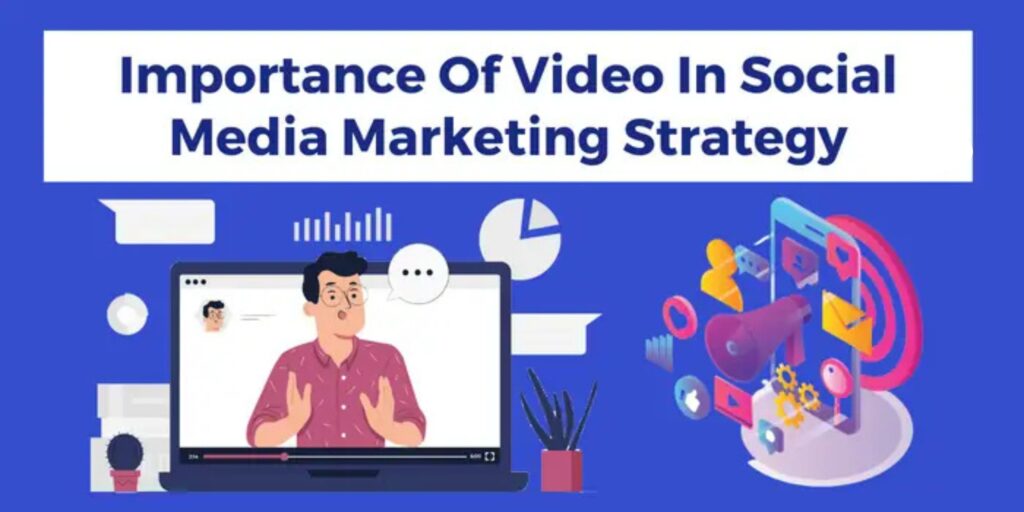
The Effectiveness of Video in Lead Generation and Conversion
In convincing any audience that video is the most effective medium for lead generation and generation in the dynamic world of digital marketing, just like in 2025. Virtually all businesses, large and small, have discovered how video can be used in content creation to introduce potential leads, help form relationships with them, and convert those potential sales leads into actual sales. The nature of video-that power to amaze, amuse, and inform in an easily absorbed way-makes it integral to the modern lead generation practice. What, however, sets it apart as a medium that could transform a few leads to paying customers? Let us consider how it works throughout the lead generation and conversion funnel.
1. Capturing Attention in a Crowded Digital Space
Thousands of information-increasing popping noises compete for customers’ ears in a fast-swirling digital world today. The contest to capture and hold their attention is an ongoing uphill battle, but video has turned out to be the most effective at cutting through the noise. Studies indicate that video content is more likely to attract a viewer’s attention and hold it longer than other media such as text or images.
If you incorporate video into your lead generation strategy, you give a prospect an excellent reason for connecting with your brand. An eye-balling explainer video, demo of your product in action, or strong teaser for another enticing free resource-there is an impulse to beautiful attraction captured by leads through watching video-that will prompt them to act. A very good video could leave a lasting first impression since it matters significantly while trying to convert leads into customers.
2. Educating and Nurturing Leads with Video Content
Video can educate potential customers as one of the strongest means of lead generation. Value-added educational videos, such as product tutorials, webinars, and how-to guides, engage an audience by addressing their problems or answering frequently asked questions. Once a potential lead sees how your product or service operates and can solve their problem, they will likely consider it a viable solution to their needs.
Conversely, video further fuels the nurturing of leads who are in the consideration step of the sales funnel; for instance, a lead who has signed up for a free trial could be sent tutorial videos that instruct them on how to get the most value from your product. These videos serve in orienting leads to the benefits and features of your product, creating a positive experience with the offering, thus enhancing the likelihood of converting free-trial members to paying customers.
3. Increasing Trust and Credibility with Video Testimonials
Trust is one of the most important factors for conversion. People are more likely to convert when they hear about the ability of a product or services to deliver on promises. Video testimonials work remarkably well, building both trust and credibility with a lead.
Video testimonials carry more weight than written testimonials because future consumers can view real people blabbing about their experiences with your brand. A video testimonial creates that emotional connection because the viewer would be able to see and hear the excitement of happy consumers. Prospects would easily see others who mostly enjoyed their benefit from services or products, thus increasing the trust in the brand and confidence in the decision to make a purchase.
The Rise of Live Video and Interactive Content
Live video and interactivity have evolved tremendously in the year 2025 concerning digital marketing. These two in digital marketing have received more importance than ever by brands reflecting the shift of consumers from traditional forms of advertising or experience to those that are more immersive and engaging. These formats allow for real-time interaction while also creating a more authentic, human connection between the brand and its audience.
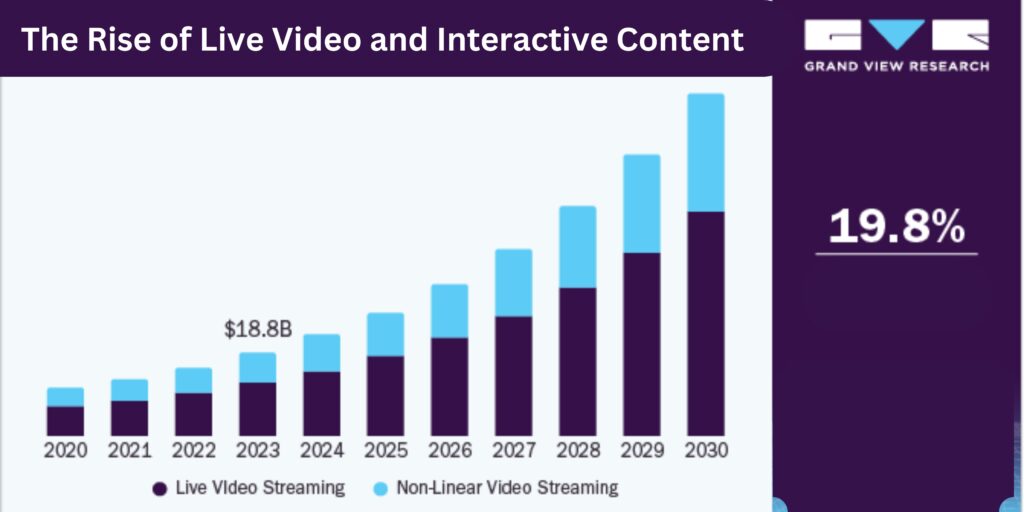
1. The Growing Popularity of Live Video
Live video is soaring in popularity. Platforms such as YouTube Live Facebook Live Instagram Live and even TikTok Live allow brands to engage with audiences in real-time. Recent reports say that 80% of consumers prefer watching live video from a brand over reading a blog post and 67% of consumers say that live video brings them closer to a brand. Being able to engage directly with their audience in real time establishes urgency and exclusivity; thus live video has become an effective engagement channel.
2. Real-Time Engagement and Consumer Interaction
One of its unique aspects is that live video is interactive. Viewers can speak up about what they are seeing through such features as live comments likes shares and polls or quizzes. This fosters a sense of community strengthening the relationship between the brand and its audience.
Interactions are valuable for businesses. They allow not just for real-time feedback but also insight into what is on consumers minds at the moment. Brands can pivot their messaging based on those interactions respond to questions and concerns on the fly or even dynamically alter their content according to audience reactions.
3. Interactive Content: The Next Level of Engagement
Another kind of interactive content that is gaining ground quite rapidly is using live video beyond communication. It ranges from polls, quizzes, interactive infographics, and surveys as well as other such applications within an engaged user. It’s the opposite of passive types of content such as a blog or static image; interactive content requires direct engagement of the user to the artifacts.
For example, the audience is notified instantaneously through quizzes and polls; both initiatives serve to gather critical data for marketers. The personalized quiz would suggest the cream of the crops for the customer while collecting vital information about his preferences. Such personalization ultimately results in more engagement, as it makes the customers believe that the content is made for them.
Video Marketing on Mobile Devices
Since mobile video has become the currency of the successful marketer focusing on online ventures in 2025, the influx of web traffic from mobile devices just leaves brands with no choice but to continue optimizing video marketing for mobile users. As mobile devices increasingly define the mode of consuming content, businesses are forced to devise strategies that create shorter, captivating, and high-quality videos that reflect the needs and behavior of mobile users.
1. The Shift to Mobile-First Content Consumption
After 2010 the shift from desktop to mobile-first content consumption has been truly revolutionary. The rise of smartphones and the advent of high-speed internet facilitated the transition to mobile video as the go-to medium for online entertainment, shopping and communication.According to research, more than 80% of consumers use their mobile devices to watch online videos, and most of the people who do so are mobile-first viewers, namely YouTube Facebook Instagram and TikTok users.
2. Optimizing Video Content for Mobile Devices
To achieve maximum productivity from video marketing on mobile, brands must create their content with small screens, touch interactions, and the unique behavior of mobile users in mind. Here are the ways to optimize video content for mobiles:
Aspect Ratio: Usually, mobile videos tend to be in 9:16 sway: that is vertical format, when seen on sites like Instagram Stories, TikTok, and Snapchat. These channels give their best treatment to vertical videos compared to the traditional horizontal ones.
Content Length: Mobile users are generally distracted and less attentive especially when scrolling through social media and watching brief videos. Short format videos between 15 and 30 seconds generate higher engagement levels on mobile devices.
3. Leveraging Mobile Video Ads
Mobile video ads are an essential component of digital advertising. Studies show that video ads for mobile earn far better attention and conversion rates in comparison to display or still ads. Therefore, the success of mobile video ads lies in the fact that they achieve attention and allow for powerful storytelling in the shortest time possible.
In-app video advertisements: Apps like Instagram, TikTok, and YouTube have built-in placements for video advertisements that sink into the users’ feeds. These ads mostly qualify as “native ads” since they assimilate into the format and style of regular content. Engaging, highly relevant video ads offer brands an opportunity to target consumers straight from within the app.

Unlock the power of Video Marketing in 2025! Start creating engaging content today to usher in success for your brand.
Conclusion:
Thus a game changer will be Video Marketing for businesses by the year 2025 presenting opportunities that remain unmatched in terms of engagement brand awareness and conversion. As the consumer shift preference towards content that is dynamic and immersive the real power of video lies in forging those deep connections between brands and audiences. From social media to search engine optimization (SEO) and interactive content, Video Marketing gives you a million ways to engage and convince your audience. If you want to be at the forefront of your industry or in tune with the ever-changing digital world, you definitely have to embrace this kind of marketing strategy.



